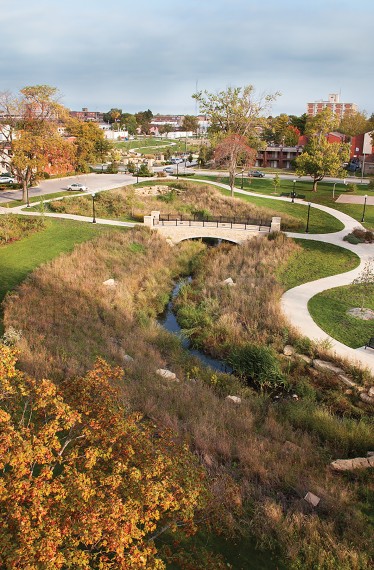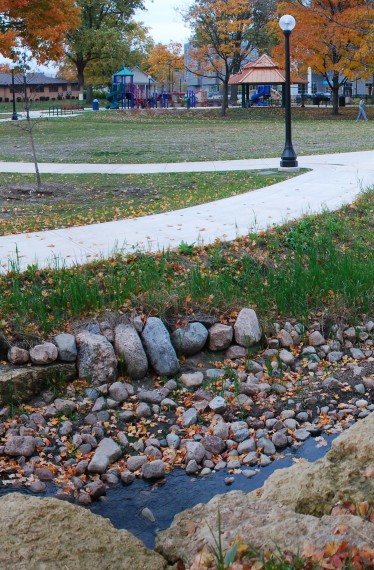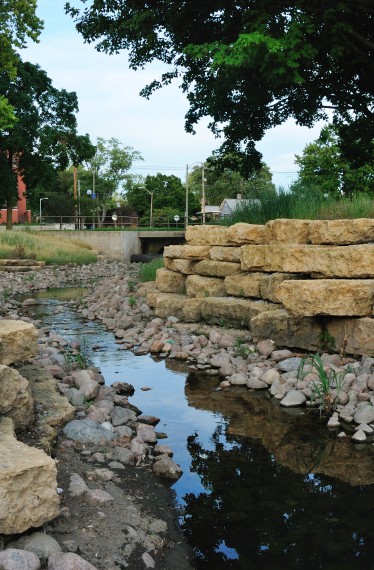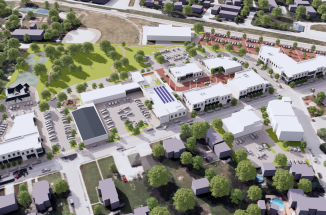Stormwater Project Revitalizes Campustown Park
Scott Park is the only municipal park in the University of Illinois Urbana-Champaign campus area, located one block from the heart of the Campustown business district, it serves as a vital recreational facility to the community. The storm water flows from the highly urbanized watershed eroded the Boneyard Creek banks through Scott Park, threatening old growth trees, as well as the recreational facilities surrounding the channel, and causing flooding of the park facilities during major rainfall events.
The foremost goal of the Boneyard Channel Improvements through Scott Park was to provide conveyance of flood flow through the park, as well as conveyance to mitigate erosive flows through the park facility and encourage passive recreational use of sidewalks and paths through the park. Major urban redevelopment was occurring to the north and east overlooking the park, adding to the need for updates and improvements. With the University of Illinois Campustown business district to the south, an additional benefit was the projects bridging to future northerly improvements along the Boneyard Creek, eventually leading to the active, revitalized downtown Champaign.
These completed improvements through Scott Park form part of the second phase of a multi-phased effort by the city of Champaign to improve drainage and to control flooding in the Boneyard Creek watershed. A deep culvert was constructed in conjunction with channel improvements to provide a 100-year staged gravity outlet for a 42 acre-foot storm water detention basin upstream of the park. Frequently recurring erosive flows from the highly urbanized drainage area are separated and directed to the box culvert, enabling the stream to be retained at its existing depth through the park and serve as an attractive, passive recreation facility. Channel improvements included the creation of stable channel meanders, pools, and riffles to accommodate both normal dry weather stream flows and flood overflows from the box culvert. A stone-faced arched pedestrian bridge, lighted trails, and naturalized plantings were constructed to enhance the channel improvements.





